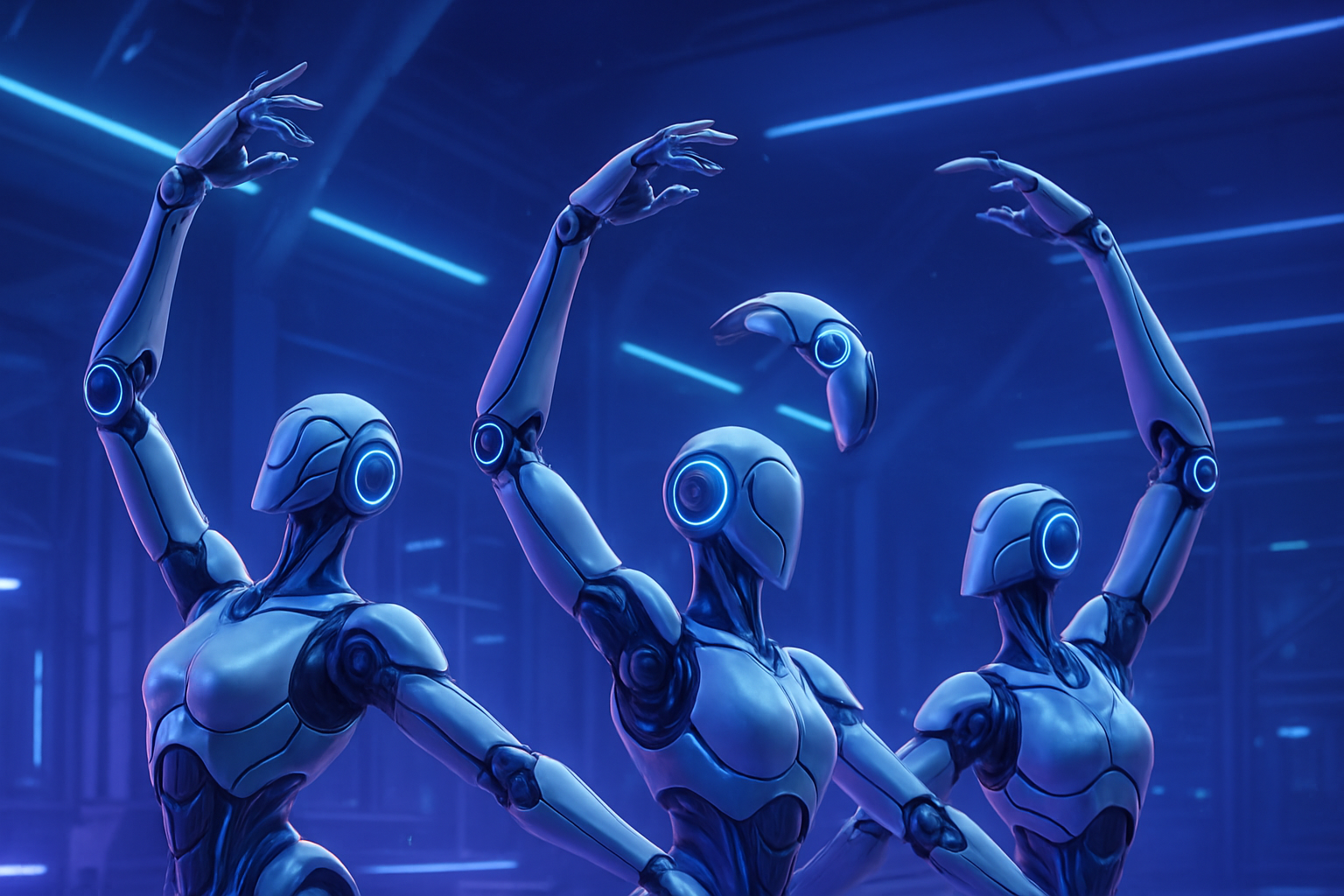The RoboBallet system is revolutionizing collaboration among robotic arms, establishing an unprecedented synergy. The challenges of automated planning, once a laborious process, find an inventive solution here. The integration of artificial intelligence offers unrivaled agility, allowing robots to adapt to complex environments. Harmony and efficiency come together in this innovative technology, transforming production lines. Robotic arms, now orchestrated with precision and grace, accomplish various tasks without infringement or chaos. A major breakthrough for the future of industrial systems, RoboBallet promises an unprecedented dynamic.
RoboBallet: a major advancement in robotics
Researchers at University College London (UCL), Google DeepMind, and Intrinsic have developed a revolutionary artificial intelligence algorithm. Named RoboBallet, this system enables multiple robotic arms to work in perfect coordination in complex industrial environments. This innovation could save manufacturers hundreds of hours of planning while significantly increasing efficiency.
How the system works
RoboBallet specifically targets teams of autonomous robots occupying shared spaces, often cluttered like assembly lines. The system allows machines to automatically optimize their movements and tasks, thus avoiding collisions with their peers and the environment.
Traditionally, this complex planning is carried out by highly specialized human programmers, a lengthy and error-prone process. Thanks to a graph-based neural network, RoboBallet uses a reinforcement learning framework to enhance its performance. This means that the “cognitive” abilities of the robots are developed through trial and error, with each success rewarded by a degree of recognition that encourages faster outcomes.
Learning capabilities
The results obtained during research are impressive. After only a few days of training, RoboBallet was able to generate high-quality plans in just a few seconds, even for complex configurations that were previously unknown. Thus, up to 40 tasks have been solved simultaneously by eight robotic arms, an unprecedented performance for previous systems.
Matthew Lai, the principal researcher at UCL and Google DeepMind, underscores that RoboBallet is revolutionizing industrial robotics. Each arm, aware of its interactions with its teammates, operates with remarkable precision and elegance, transforming potential chaos into a harmonious dance.
Flexibility and scalability
This system is not only fast, but it also allows factories to instantly adapt to equipment failures or changes in architecture. RoboBallet offers more than just task execution; it facilitates the optimization of arrangements, dictating the ideal placement of robots to maximize efficiency. Researchers assert that this algorithm’s ability to handle varied scenarios marks a significant advancement in the field.
Traditional planning algorithms struggle to effectively manage multiple robots due to the exponential complexity they require. RoboBallet’s graph-based architecture allows it to learn general principles of coordination, making the system suitable for large-scale applications.
Potential applications
This technology presents wide-ranging prospects. It could transform sectors such as automotive manufacturing, electronic component assembly, or even unconventional construction. Its usefulness will be particularly pronounced in environments where close cooperation between robots is essential.
Future and limitations
Currently, RoboBallet focuses on specific tasks such as moving an arm to a designated point. However, researchers envision developments toward more complex operations like object manipulation or painting. Future versions could address other challenges such as task dependencies, heterogeneous robot teams, and more sophisticated obstacle geometries.
Despite its advantages, researchers acknowledge that RoboBallet does not yet cover all industrial situations. For example, it does not account for tasks requiring a precise order of execution or robots with varied skills. These aspects still need improvement, but the system’s flexible architecture facilitates their future integration.
Frequently asked questions about the RoboBallet system
What is the RoboBallet system and how does it work?
The RoboBallet system is an artificial intelligence algorithm developed to coordinate robotic arms in industrial environments. It uses a graph neural network and reinforcement learning to automatically plan the movements of the robots, thus avoiding collisions and optimizing efficiency.
What advantages does RoboBallet offer over traditional robotic planning methods?
RoboBallet drastically reduces planning time, generating work plans in seconds where traditional methods required hours of human effort. It also increases the flexibility and adaptability of production lines.
How does RoboBallet handle obstacles in the work environment?
The system treats each obstacle as a point in a network, allowing it to analyze and plan movements considering interactions with these obstacles while maintaining harmony between the robotic arms.
Can RoboBallet be applied to various production configurations?
Yes, RoboBallet is designed to operate in different types of industries, including automotive assembly, electronics, and even construction. Its ability to generate plans quickly makes it adaptable to complex layouts.
What limitations does RoboBallet currently have in its application?
RoboBallet does not yet manage scenarios involving tasks that must be performed in a precise order or those requiring robots with different capabilities. These features could be integrated into future versions.
What type of tasks can RoboBallet currently accomplish?
Currently, RoboBallet is primarily used for simple tasks like reaching defined points, but researchers plan to expand its capabilities to more complex operations such as object manipulation or painting.
What impact could RoboBallet have on the manufacturing industry?
RoboBallet could transform the manufacturing industry by making processes more efficient and agile, allowing factories to respond quickly to changes in demand and optimize robotic resource allocation.






